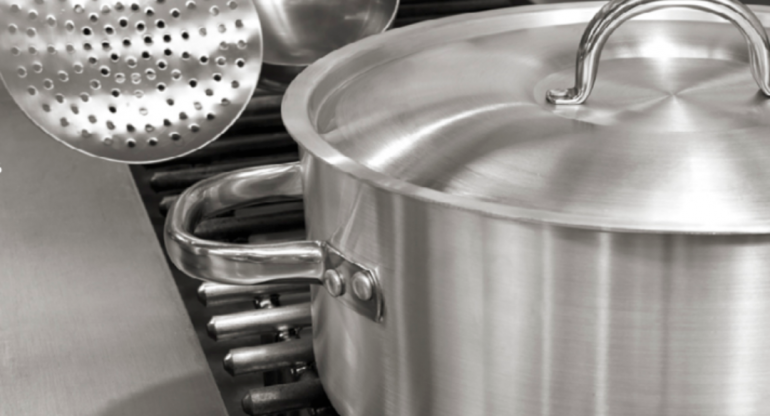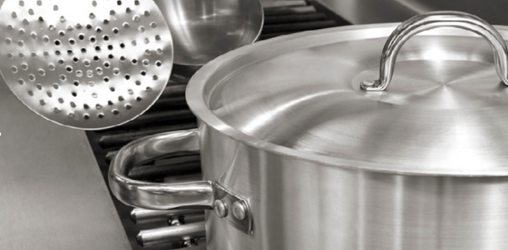Use of aluminium in cookware
Aluminium in cookware, a chemical element with the symbol ai, which is very abundant in the earth’s crust, constituting 7.3% of its mass.
It is a very soft, malleable, non-magnetic metal with a very good thermal conductivity. It is the cheapest and the lightest of the metals used for the manufacture of kitchen utensils
In contact with air, a thin layer of oxide forms, which adheres very well to the metal and is equipped with excellent anti-stick properties. The downside is that this patina is very thin and can be easily scratched. To obtain a thicker oxide layer, sometimes aluminium is subject to the anodization process.
Did you know that?
Due to its low density, its specific heat capacity is lower than that of other metals, so a thicker base is required to maintain stable cooking temperatures. In addition, aluminium, especially where it is thin, can easily harden.
Aluminium charactaristics in cookware

MATERIAL:
Extremely light and very malleable. These features mean it is not very resistant to knocks as it deforms very easily. It is a porous material that can make cleaning difficult.
THERMAL CONDUCTIVITY:
After copper, aluminium is the material with the highest heat conductivity used for the manufacture of cookware. this means we can get a very uniform heat distribution throughout the receptacle and makes it the ideal material for energy saving.
USE:
Ideal for gas or electric kitchen. Not approved for induction unless it has an iron base soldered to the external part of the bottom. It can be used in the oven without problems.
MAINTENANCE AND HYGIENE:
Being a porous material means that cleaning is more complicated because, if it is not done correctly, bacteria may remain in the pores and contaminate the food.
Did you know that?
– Due to its porosity, food must not be stored in aluminium receptacles.
– It should be cleaned with neutral soaps and non-abrasive sponges.
– It is not recommended to use in the dishwasher, as it may soil the surface of the piece,
causing it to adopt a whitish colour.





